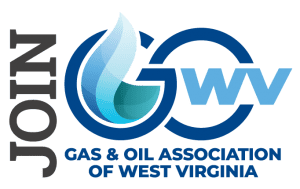Manufacturing has long been a pillar of West Virginia’s economy, powered by our skilled workforce and an abundance of natural resources. While reflecting on our history provides us with a sense of gratefulness and pride, future opportunities create a sense of innovation, drive, and growth.
Behind this drive and growth is West Virginia natural gas development and use, particularly as a feedstock for our state’s manufacturing sector. With an abundant supply of low-cost, reliable natural gas — thanks to the availability of domestic shale — we are growing our production capabilities in West Virginia again.
Today, West Virginia has a competitive advantage when it comes to manufacturing that’s worth celebrating this Manufacturing Day. West Virginia is the nation’s fifth largest energy producer, primarily driven by technological advancements that enabled us to tap into the Marcellus and Utica shale formations, rich with natural gas and natural gas liquids (NGLs). Over the past 10 years, both state production and consumption of natural gas have increased by 770% and 200%, respectively.
The state’s natural gas and oil industry supported 82,000 jobs and contributed to $5.2 billion in total labor income in 2019, according to the American Petroleum Institute.
The primary benefit of natural gas for the industrial and manufacturing sectors in West Virginia is easy access to abundant supplies of ethane, butane, and propane. Each are derivatives from natural gas and NGLs that serve as key feedstocks used in a variety of advanced manufacturing processes creating life’s everyday essential items, such as plastics, medical equipment, and electronics.
Thankfully, we have leaders in West Virginia who recognize the importance of natural gas and the many benefits it brings our state and local communities, including as an affordable, reliable energy source and as a feedstock for our state’s growing manufacturing sector.
“Responsible production of natural gas and practices like hydraulic fracturing have improved our nation’s energy security while supporting the nearly 1.5 million hard working Americans the industry employs, including in rural communities across our great nation,” Sen. Joe Manchin wrote in a letter to President Biden earlier this year.
The senator is right. Beyond West Virginia’s supply of natural gas, our skilled workforce, collaborative industry partnerships, and higher education system continue to advance these sectors and the state economy.
Manufacturers in West Virginia account for more than 10% of the state’s total output, representing nearly $8 billion of our state’s GDP, according to the National Manufacturers’ Association (NAM), mostly in chemical, motor vehicle, and metals production.
These manufacturing jobs employ approximately 50,000 West Virginians (about 6.5% of the state’s total workforce) at production sites such as the Toyota factory in Putnam County and the local steelworkers here in Huntington. And world-class research institutions like West Virginia University are also receiving support from the federal government to explore innovative technologies that use local natural gas to benefit other industries like carbon fiber and polymer additives.
These attributes are what make West Virginia and the broader Appalachian Basin a prime location for the rebirth of American manufacturing.
Fueled by natural gas, our energy and manufacturing industries continue to thrive and expand, providing the state and country access to a stronger, more robust economy without sacrificing energy reliability. This Manufacturing Day, we celebrate what West Virginia has accomplished and look forward to our state’s bright future.
Charlie Burd is executive director of the Gas and Oil Association of West Virginia. Rebecca McPhail is president of the West Virginia Manufacturers’ Association.

